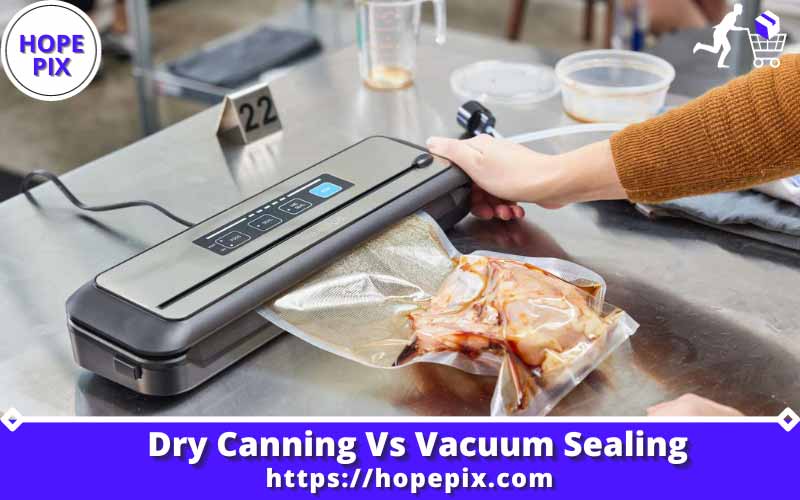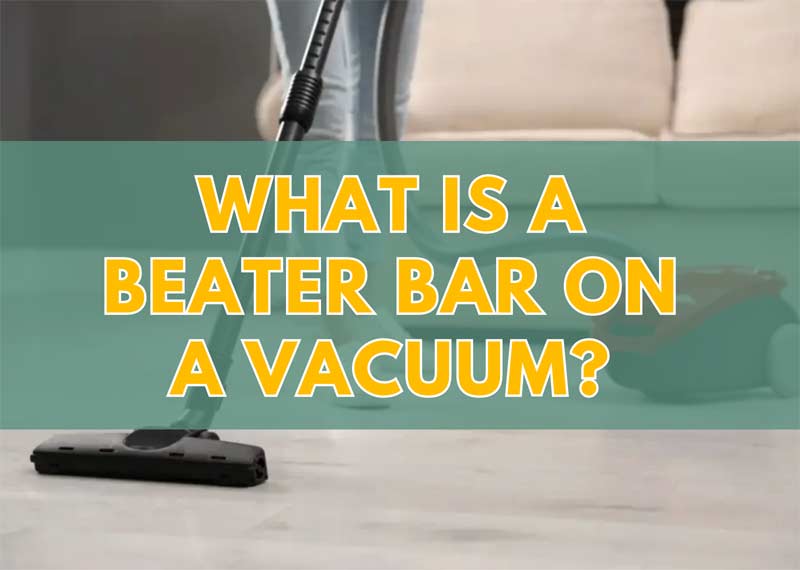Dry canning vs vacuum sealing are two different methods of food preservation. Dry canning involves sealing food in a dry container without the use of any liquid, while vacuum sealing utilizes a vacuum sealer machine to remove air from a bag or container in which food is stored, and then sealing it.
Food preservation is a crucial aspect of our daily lives, and it has become increasingly important to choose the right method of preservation for your specific needs. Dry canning is an easy and inexpensive method that does not require any special equipment. On the other hand, vacuum sealing is a more expensive option that requires a vacuum sealer machine, but it can provide a longer shelf life for your food. In this article, we will explore the differences between dry canning vs vacuum sealing and the benefits of each method.
Pros And Cons Of Dry Canning
Canning is an excellent way to preserve food for long periods without the need for a refrigerator or freezer. Dry canning is an age-old technique practiced by many people worldwide. The procedure is pretty simple; you pack dried food items in a jar and seal it using a vacuum sealer. There are specific advantages and disadvantages associated with dry canning, as discussed below.
Advantages Of Dry Canning
One of the primary benefits of dry canning is that it allows you to store food for an extended period, ranging from months to years, even without refrigeration. With proper canning techniques, dry-packaged foods, such as pasta, beans, rice, grains, and nuts, can remain fresh for up to 30 years. This makes it a popular technique among preppers and survivalists who desire food security during emergencies.
Cost-effective
Another advantage of dry canning is that it is cost-effective. Compared to other food preservation methods like freezing, which require electricity to work, dry canning does not require any power. This makes it ideal for people living off the grid or with less access to electricity.
Little to no electricity required
Furthermore, as mentioned above, dry canning requires little to no electricity. This means that even during a power outage, you can still enjoy fresh food that has been preserved via the dry canning process.
Disadvantages Of Dry Canning
Limited food options
The dry canning process is not suitable for all types of food items. Ideally, you can only dry can dry-packaged foods, such as pasta, beans, rice, grains, and nuts. This means that fresh fruits and vegetables cannot be preserved using this method.
Risk of botulism
Dry canning also poses a risk of botulism, a potentially fatal form of food poisoning caused by a bacterium called clostridium botulinum. This bacterium produces a toxin that attacks the nervous system, leading to muscle paralysis. The bacteria thrive in an anaerobic environment, such as the one found in improperly canned food, making it essential to ensure that the canning process is done correctly.
Risk of spoilage due to improper canning
Finally, there is a risk of spoilage when dry canning is not done correctly. Proper canning techniques, such as sterilizing the jar, using the appropriate canning lids, and checking for signs of spoilage before consuming, are crucial to prevent spoilage and food poisoning. Failure to adhere to the correct procedure can lead to the growth of harmful microorganisms, which can cause food poisoning, stomach upsets or fermenting of food, rendering it inedible.
Dry canning is an effective way of preserving food for extended periods without refrigeration. However, there are specific advantages and disadvantages associated with it. It is cost-effective, requires little to no electricity and is excellent for preserving dry-packaged foods. However, it is not suitable for all types of food items and poses a risk of botulism and spoilage when not done correctly. It is essential to adhere to proper canning techniques to ensure food remains fresh and edible.
Pros And Cons Of Vacuum Sealing
Are you struggling with ways to keep your food safe and fresh for an extended period? Two of the most popular ways of preserving food are dry canning and vacuum sealing. We will explore the pros and cons of vacuum sealing.
Advantages Of Vacuum Sealing
Vacuum sealing has several advantages over other food preservation methods.
- Longer shelf-life compared to dry canning: Vacuum sealing can extend the shelf life of food by up to five times when compared to dry canning. This is because vacuum sealing removes air from the packaging, which slows down the oxidation process and reduces the growth of bacteria.
- Wide range of food options: Vacuum sealing can be used for almost all types of food, including fresh, cooked, and dry foods. This means that you can save meats, fruits, vegetables, and even marinades.
- Convenient for everyday use: Vacuum sealing is convenient for everyday use. You can store food that you plan to eat later in the day or week. Also, vacuum-sealed food takes up less space in your fridge, freezer, or pantry.
Disadvantages Of Vacuum Sealing
Although vacuum sealing is effective in preserving food, it has some downsides.
- Can be expensive: Vacuum sealing requires special equipment, which can be expensive. You will need to invest in a vacuum sealer and bags. However, once you have the equipment, it will last for a long time, and you can save money in the long run.
- Requires electricity: Vacuum sealing requires electricity to function. If you have a power outage, you won’t be able to vacuum seal your food.
- Cannot be used for all foods: Although vacuum sealing can be used for most foods, some foods are not compatible with this method. Foods such as mushrooms, garlic, and soft cheeses release gases during storage, which can cause the vacuum seal to break down.
Vacuum sealing is an excellent way of preserving food. It extends the shelf life of food, can be used for different types of food, and is convenient for everyday use. However, vacuum sealing requires an investment in equipment, needs electricity to function, and is not suitable for all types of food.
Dry Canning Vs Vacuum Sealing: Which Is The Best Option For You?

Preservation of food has been an essential aspect of human life for centuries. As time passes by, people have found different ways of preserving food that suit their needs. Among the most used methods today are dry canning and vacuum sealing. However, choosing which method to use depends on several factors. We’ll look at what factors to consider when choosing between dry canning and vacuum sealing, a comparison of both methods based on these factors, and which method is better in certain contexts.
Factors To Consider When Choosing Between Dry Canning And Vacuum Sealing
1. Cost
- The cost of both dry canning and vacuum sealing depends on the equipment used and the size of the containers. Generally, vacuum sealing is more expensive than dry canning because of the vacuum sealer’s cost.
- If you regularly use both methods, it may be economical to invest in both a canner and vacuum sealer.
2. Food Type
- Both dry canning and vacuum sealing are suitable for different types of foods. Dry canning is more appropriate for dry foods such as rice, beans, and pasta. Vacuum sealing is better for wet and moist foods like meat, fruits, and vegetables.
- Dry canning works by removing air, so it is not suitable for moist foods because they can quickly become spoilt.
3. Purpose Of Preservation
- The purpose of preservation is also a critical factor when choosing between the two methods. If you need to extend your food’s shelf life for an extended period, dry canning is the better option. It can preserve food for up to ten years.
- Vacuum sealing is suitable for short-term preserving food. The method can preserve food for up to three years.
Comparison Of Both Methods Based On The Above Factors
1. Cost
- Dry canning equipment is affordable compared to vacuum sealing. You only need a canning jar, a canning lid, and a canning ring, which is quite economical.
- In contrast, vacuum sealing equipment is costly, but its cost varies depending on the brand and the features.
2. Food Type
- Dry canning is ideal for dry foods like pasta and rice as the food doesn’t need any moisture.
- Vacuum sealing is perfect for fresh fruits, vegetables, and meat, as it keeps them fresh.
3. Purpose Of Preservation
- Dry canning prolongs shelf life for an extended period.
- Vacuum sealing preserves food for a short time, limited to a few months.
Conclusion On Which Method Is Better In Certain Contexts
Both dry canning and vacuum sealing have their advantages and limitations. If you’re looking to preserve dry foods for an extended period, dry canning is the best option. For fresh foods that you’ll consume shortly, vacuum sealing is the better option. Overall, choosing between the two methods depends on your preference, food type, and purpose. We hope this guide has been informative and can help you choose which preservation method is best for your food storage needs.
Tips For Successful Dry Canning And Vacuum Sealing
If you’re into canning, there’s a possibility that you’re almost always questioning whether you should be using dry canning or vacuum sealing. Both approaches are fantastic options for keeping your food fresh and secure for an extended time. However, if you’re a beginner, it could be perplexing to choose which method to use, which is why we’ve compiled a list of helpful tips to aid you in having a successful dry canning or vacuum sealing experience.
Dry Canning Tips For Beginners
Dry canning is a popular technique that entails packing dried or dehydrated foods into jars and processing them. Here are some essential tips on how to dry can effectively:
- Usage of recommended jars: Not every mason jar is suitable for dry canning, so ensure that you choose jars intended for dry canning. They should be able to resist breakage at high temperatures and possess a proper seal.
- Checking the seal: It’s critical to verify that the jars have a firm seal. If the jar doesn’t seal correctly, it could result in contamination or spoilage of the food. To check for proper sealing, lightly tap the lid. If the lid moves when you touch it, the seal is no good.
- Sterilizing jars and lids: Before you start the canning process, sterilize the jars and lids in simmering water for ten minutes. This helps to eliminate bacteria and extends the shelf life of the canned food products.
Vacuum Sealing Tips For Beginners
Vacuum sealing is the process of packing foods into plastic bags and eliminating air before storing them. This technique can help preserve the taste and freshness of the food for up to five times longer than other storage methods. Here are some tips for successful vacuum sealing:
- Choosing the right sealer: Choosing the right sealer is critical to effective vacuum sealing. Assess your intended use, and choose a sealer that’s compatible with your needs. You’ll sometimes want sealers with programmable settings, while other times a simple handheld sealer will suffice.
- Oxygen absorbers: Oxygen absorbers are small packets that include iron powder and sodium chloride. They serve to remove oxygen from bags or containers so that food stays fresh and nutritious. It’s best to use oxygen absorbers that are suitable for the product you’re sealing.
- Labeling and organization: Vacuum sealed foods all look the same, so labeling them is critical. Labeling helps in identifying what’s contained in a particular package without the need to open it. Additionally, ensure you organize your vacuum sealed foods in a clear and clean space.
By following these tips, both dry canning and vacuum sealing can be very rewarding storage methods for keeping your food fresh and safe for the long term.
Conclusion
From the discussion above, we can conclude that both dry canning and vacuum sealing involve food preservation techniques that help to extend the shelf life of various food items. It is clear that dry canning is a more affordable alternative that requires no electricity or special equipment, making it an excellent option for those on a tight budget. Vacuum sealing, on the other hand, is a bit expensive but highly effective in preserving food in a much fresher state.
When deciding on which method to choose, it is vital to consider individual needs and preferences along with the type of food to be preserved. Both methods have pros and cons, and one should carefully weigh their options before making the right decision on the method to use. Ultimately, the choice between dry canning and vacuum sealing largely depends on the user’s needs, budget, and preferences.
Frequently Asked Questions Of Dry Canning Vs Vacuum Sealing
Dry canning food is a method of storing dry goods like flour, sugar, and rice that does not require the use of liquid. The process involves placing the food in an airtight container such as a mason jar and sealing it with an oxygen absorber.
Vacuum sealing is a method of food preservation that involves removing all the air from a sealed container, preventing the growth of bacteria. This is achieved through the use of a vacuum sealer machine which removes the air, and then seals the bag using heat.
No, dry canning meat is not recommended as it poses a risk for botulism. It is safer to freeze or pressure can meat to ensure its safety and longevity.
Dry canning is a great way to store dry goods long-term without the risk of spoilage or infestation. It is also a budget-friendly option as it doesn’t require special equipment or electricity. Additionally, dry canning allows for portion control, making it ideal for small households.
Food can last up to 2-3 years in a vacuum-sealed container, which is longer compared to traditional storage methods. However, it’s important to note that the quality and flavor of the food may begin to deteriorate after several months.

Hi there! I’m Tareq, the vacuum aficionado behind the reviews on this site. With a passion for spotless spaces and a knack for dissecting vacuum features, I’m here to simplify your hunt for the perfect cleaning companion. Let’s make cleaning a breeze together!

